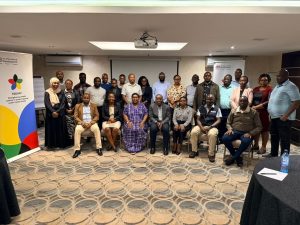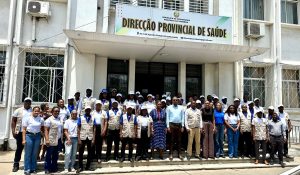Cholera Outbreak in Lusaka: Zambia Field Epidemiology Training Program undertakes contact tracing
-
by
AFENET

In response to the cholera outbreak in Lusaka, the Zambia Field Epidemiology Training Program (FETP) has undertaken contact tracing efforts within the George and Garden compounds of the capital city in a bid to find more suspected cases as a way to mitigate the crisis. The outbreak in these areas is associated with poor access to safely managed water supply and sanitation.
In areas with low-water basins, such as the Garden compounds, residents rely on shallow wells for their water needs. Unfortunately, these wells are highly vulnerable to contamination from nearby pit latrines, contributing to the spread of cholera within the community.
Contact tracing and chlorine distribution
Despite educational initiatives encouraging the use of chlorine to make water safe for drinking, Dr. Nyambe Sinyange, the Program Director of Zambia FETP, expressed concern that chlorine levels in sampled household water in these communities are insufficient for effective protection.
Free residual chlorine tests conducted in the household water confirmed that the chlorine levels fall below the recommended standards. To address this dire situation, Dr. Nyambe, in collaboration with two Zambian FETP graduates, Mr. Amos Hamukale (a graduate of the Cohort III Advance FETP) and Dr. Sinyange Danny (a graduate of the Cohort IV Advanced FETP), led the contact tracing and chlorine distribution efforts in these areas.
Supported by Lusaka water maintenance teams, this involved providing chlorine to homes as well as thorough instruction on how to use it properly. The FETP team first examines data for the most recent cases (two weeks) for clustering before using high-impact contact tracing. Contact tracing is given priority for the clustered cases. The entire community impacted by the clustering of cases is evaluated in terms of access to safely managed water and sanitation during the field visits. The FETP team promptly notifies the Water Supply Company to chlorinate the water to the recommended level when FRC falls below the recommended levels for the affected area’s water supply.
The Lusaka Water and Sewerage Company (LWSC), the Centres for Disease Controland Prevention (CDC), the Ministry of Health (MoH), and the Zambia National Public Health Institute (ZNPHI) have all worked together to contain the outbreak. Together, they put in place a programme to monitor the quality of water sources by randomly testing them for the presence of free chlorine residual and Escherichia coli (E. coli), a sign of faecal contamination.
Back in history
In their publication titled “Cholera Epidemic – Lusaka, Zambia, October 2017–May 2018,” in the Morbidity and Mortality Weekly Report (MMWR), Sinyange and others highlighted that shallow wells (91%) and boreholes (34%) were the most contaminated water sources.
During the Lusaka 2018 cholera outbreak, a daily monitoring program for all emergency water tanks across Lusaka was put in place. Daily reports were shared with LWSC and MoH, identifying locations of empty tanks and those with free chlorine residuals below 1.0 mg/L†. This ensures immediate corrective action, such as refilling tanks or boosting chlorination in water trucks at filling reservoirs. Similar efforts are being made during the 2023/2024 outbreak; one of the current FETP trainees is leading this initiative.
The cooperative efforts of the Zambia FETP, governmental organizations, and water management authorities are crucial in putting into practice efficient and prompt actions to protect public health while the cholera outbreak continues to endanger the Zambian communities. To stop cholera from spreading further in the impacted areas, problems with access to safely managed water and sanitation must be addressed immediately.



